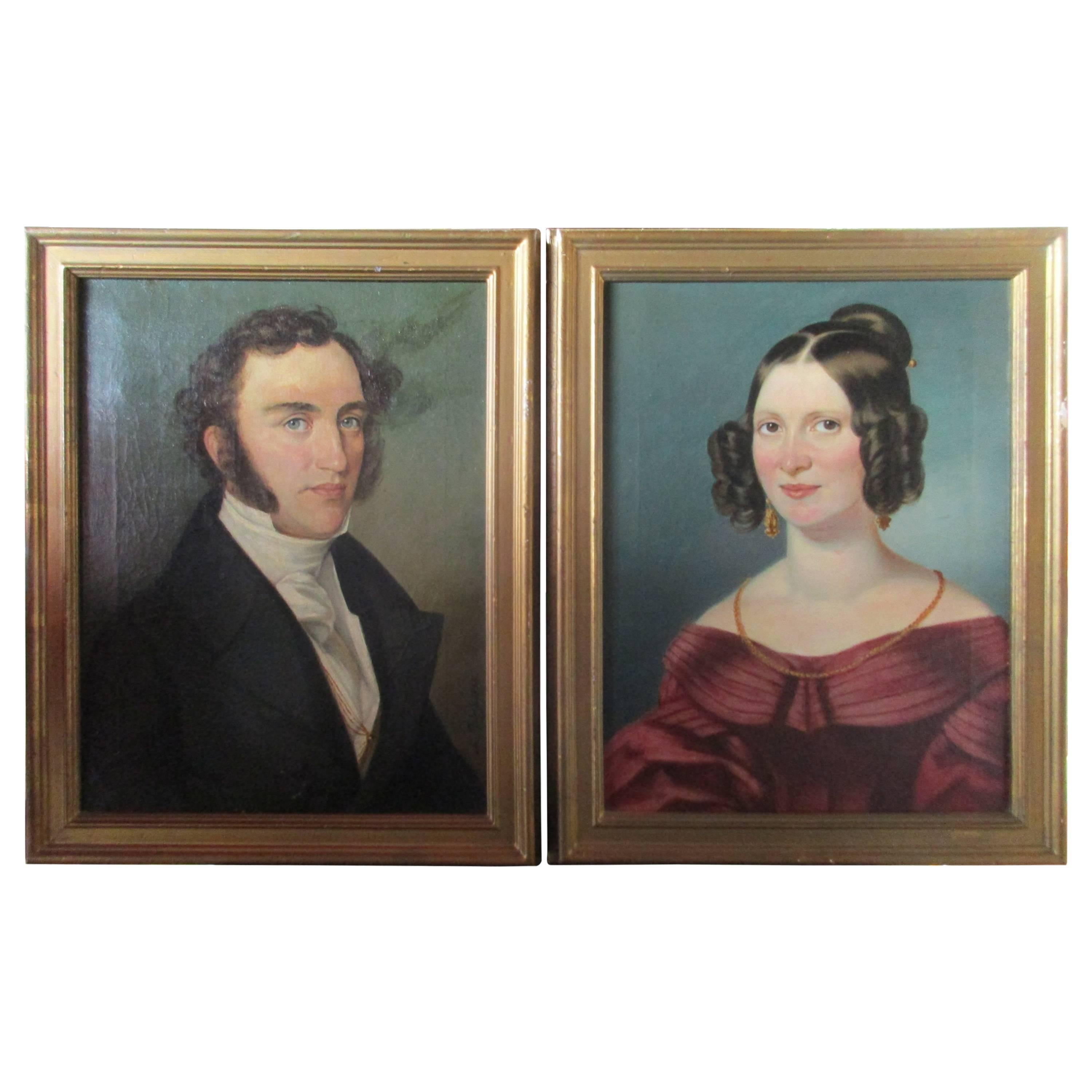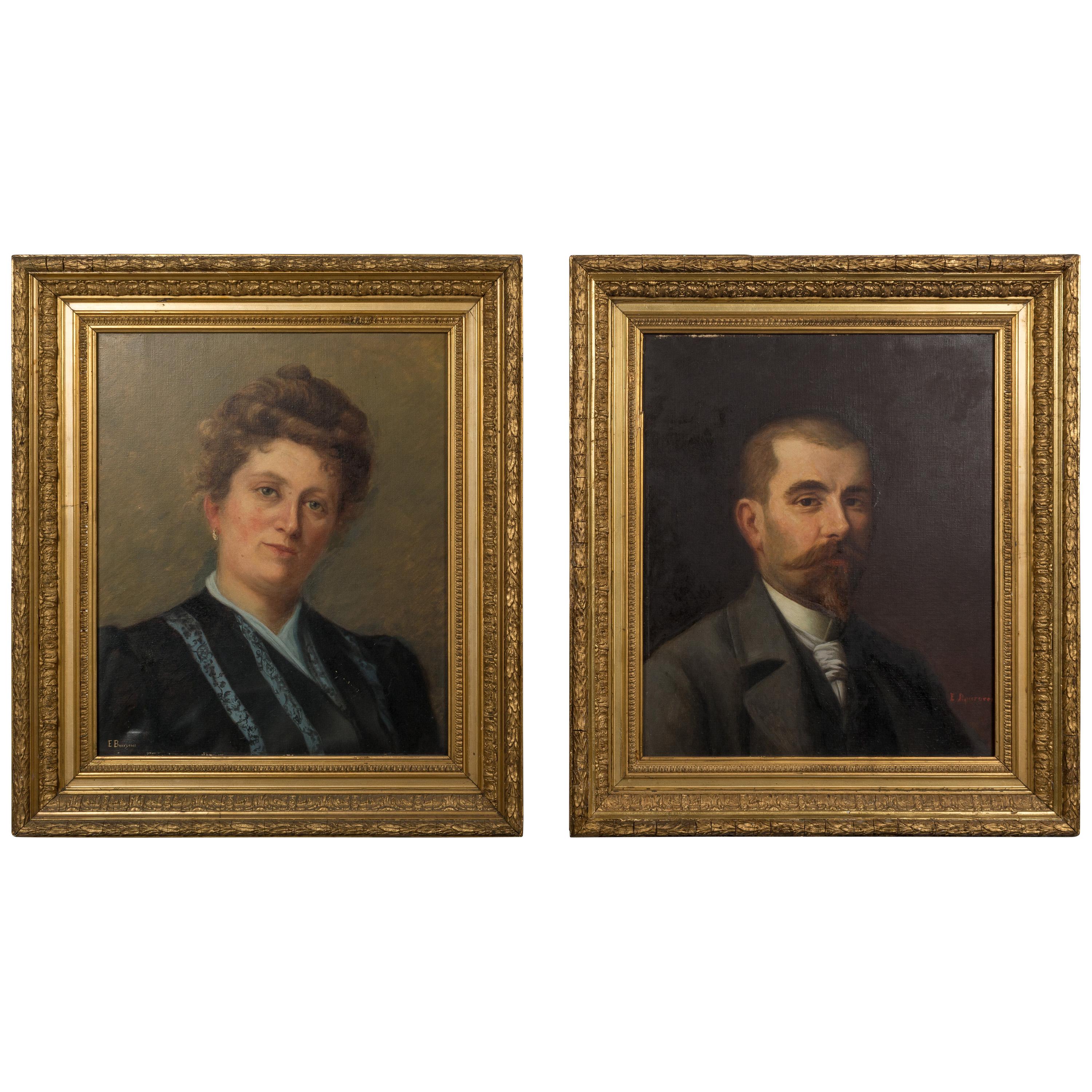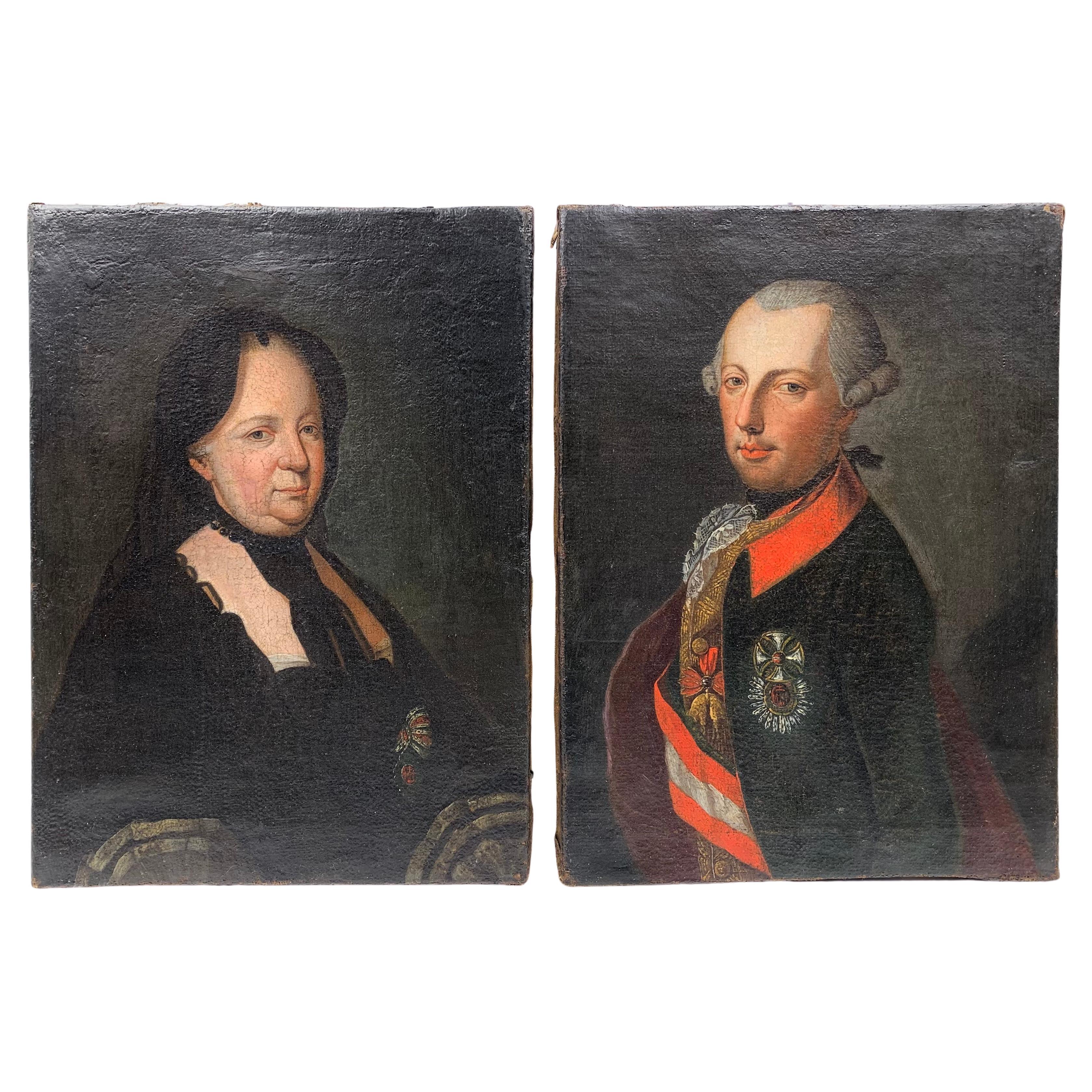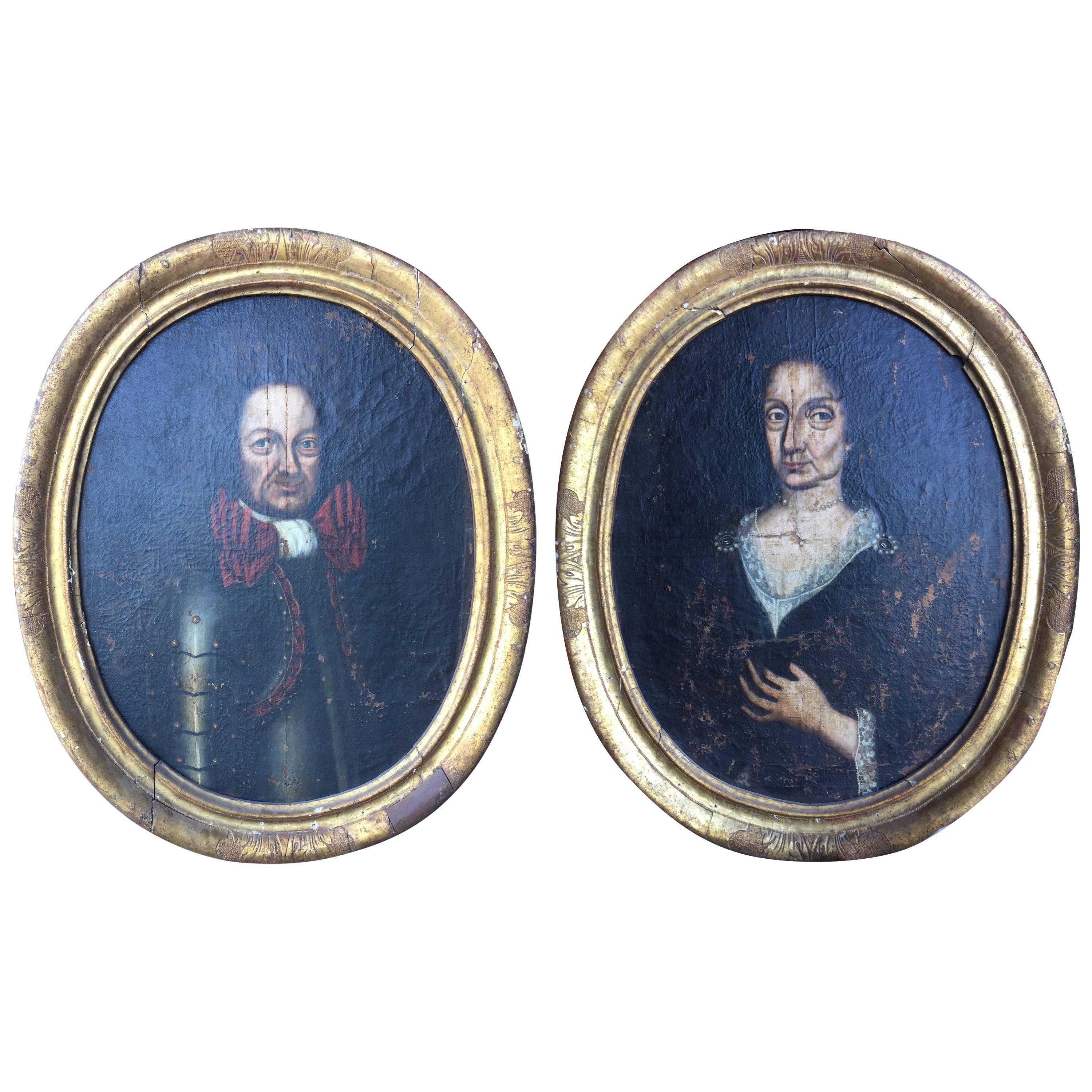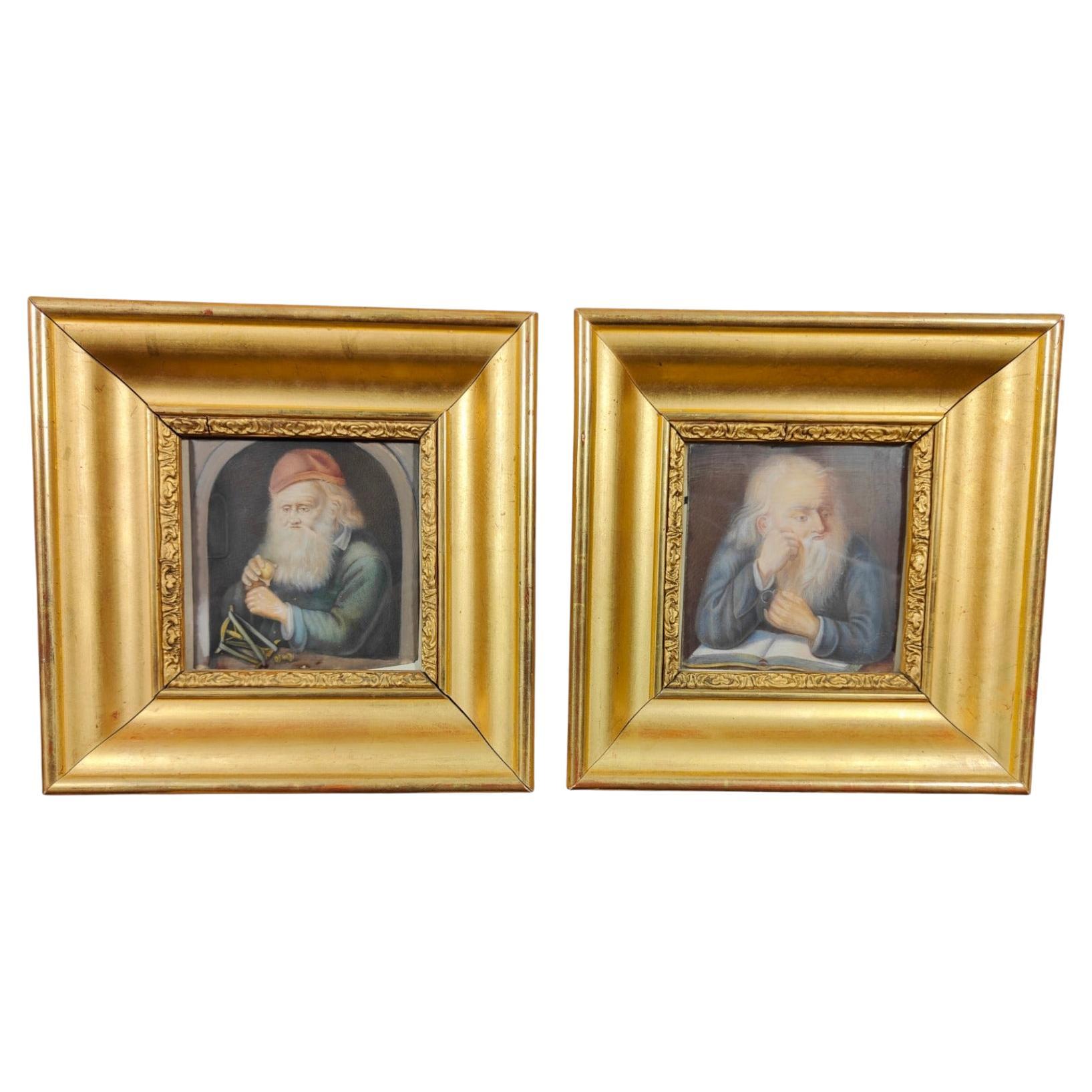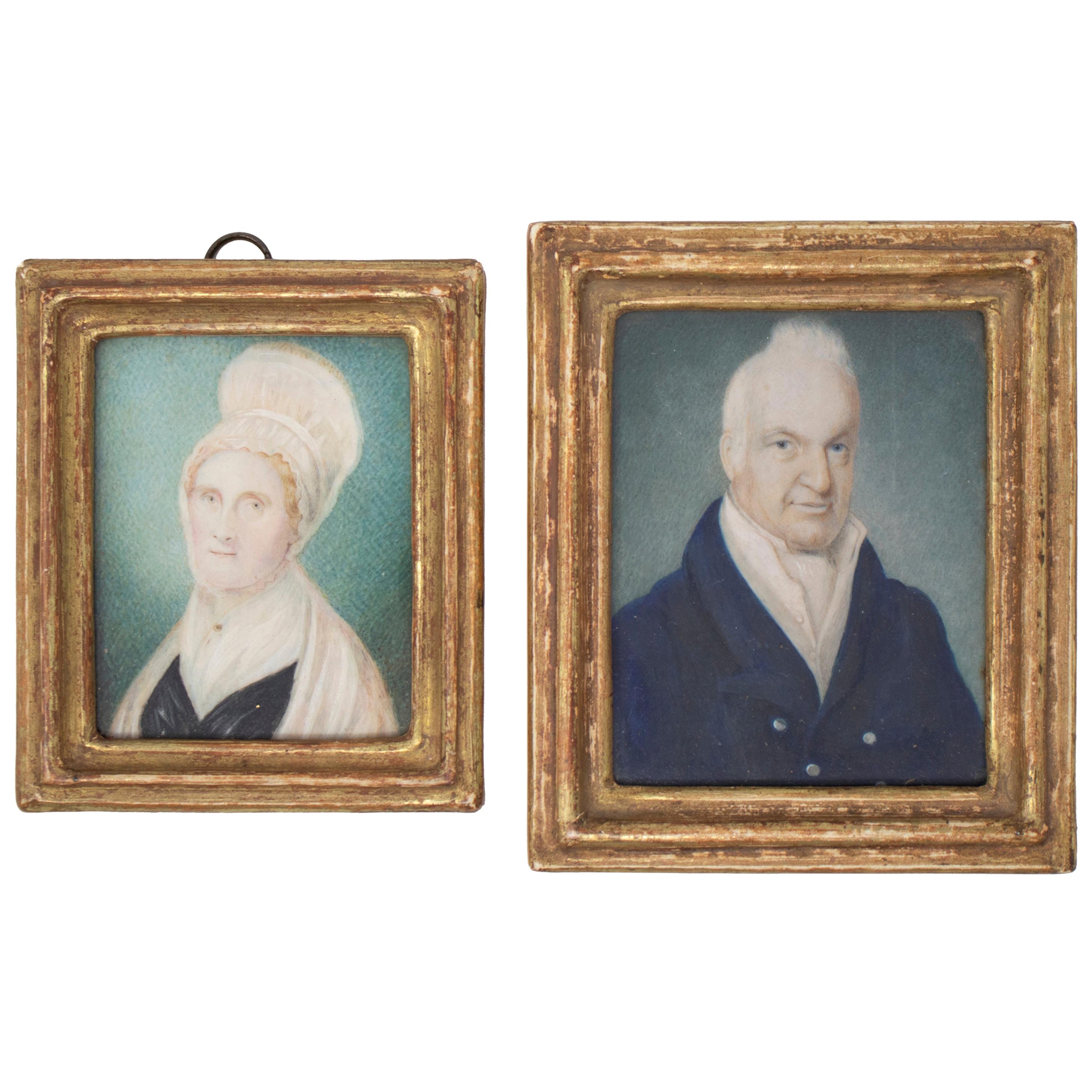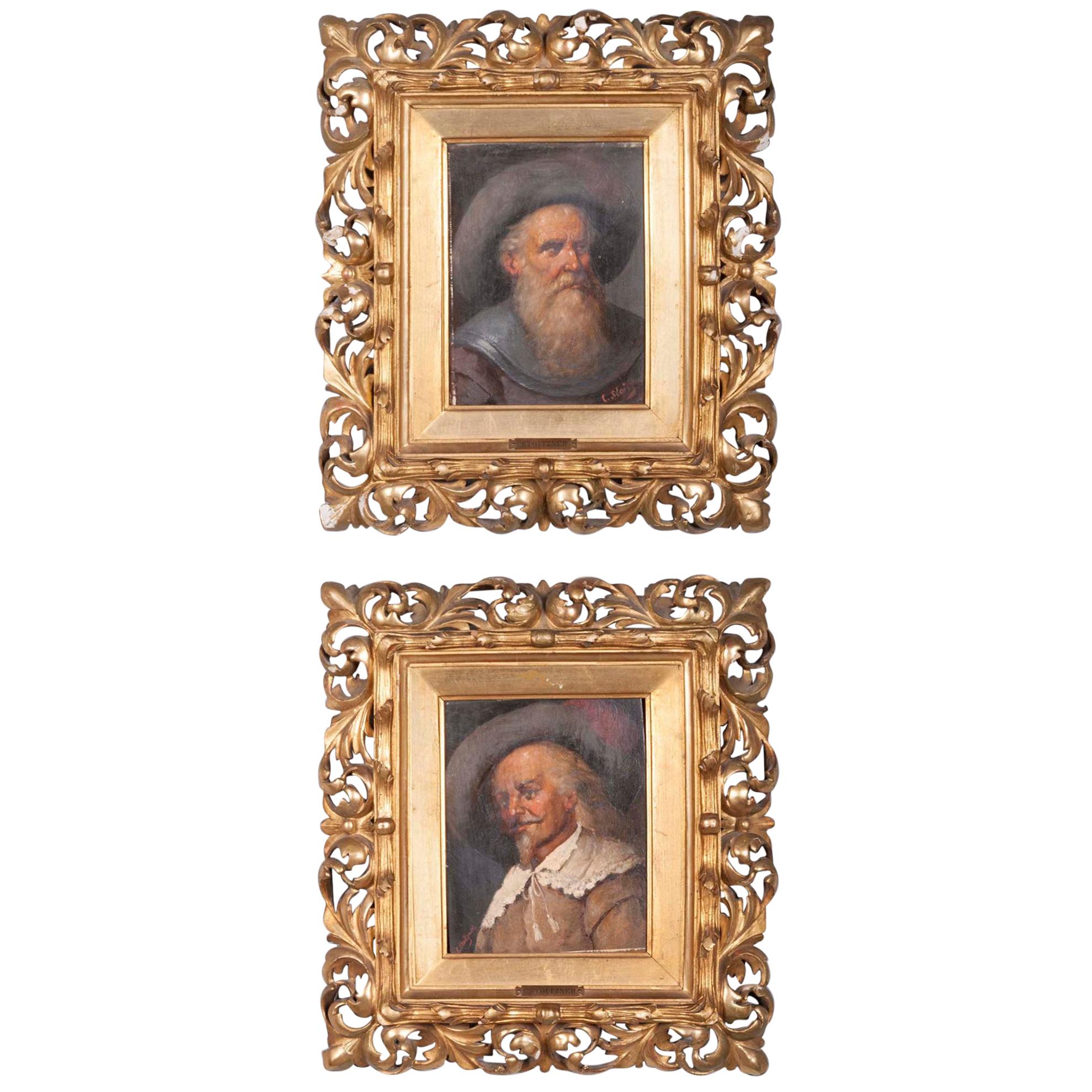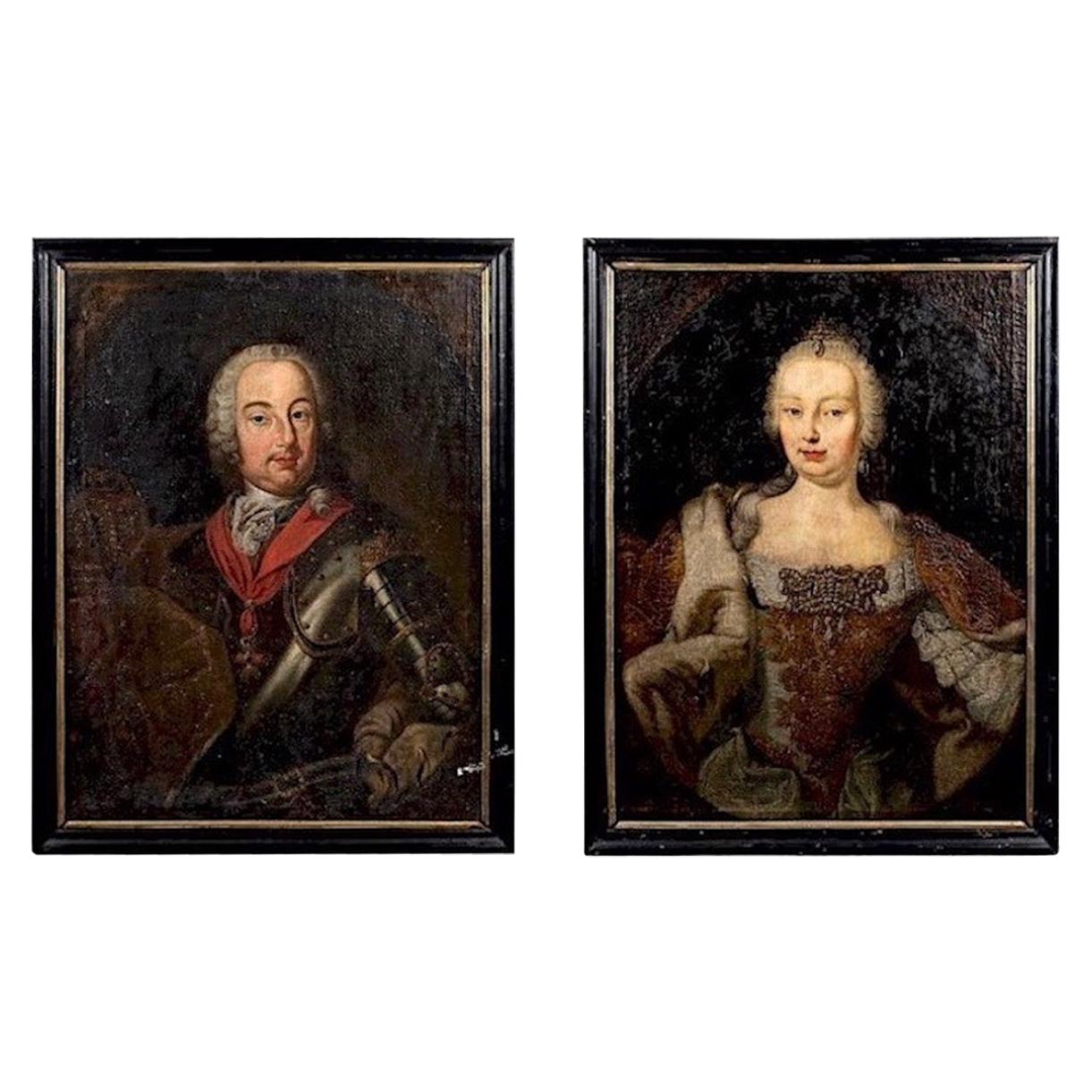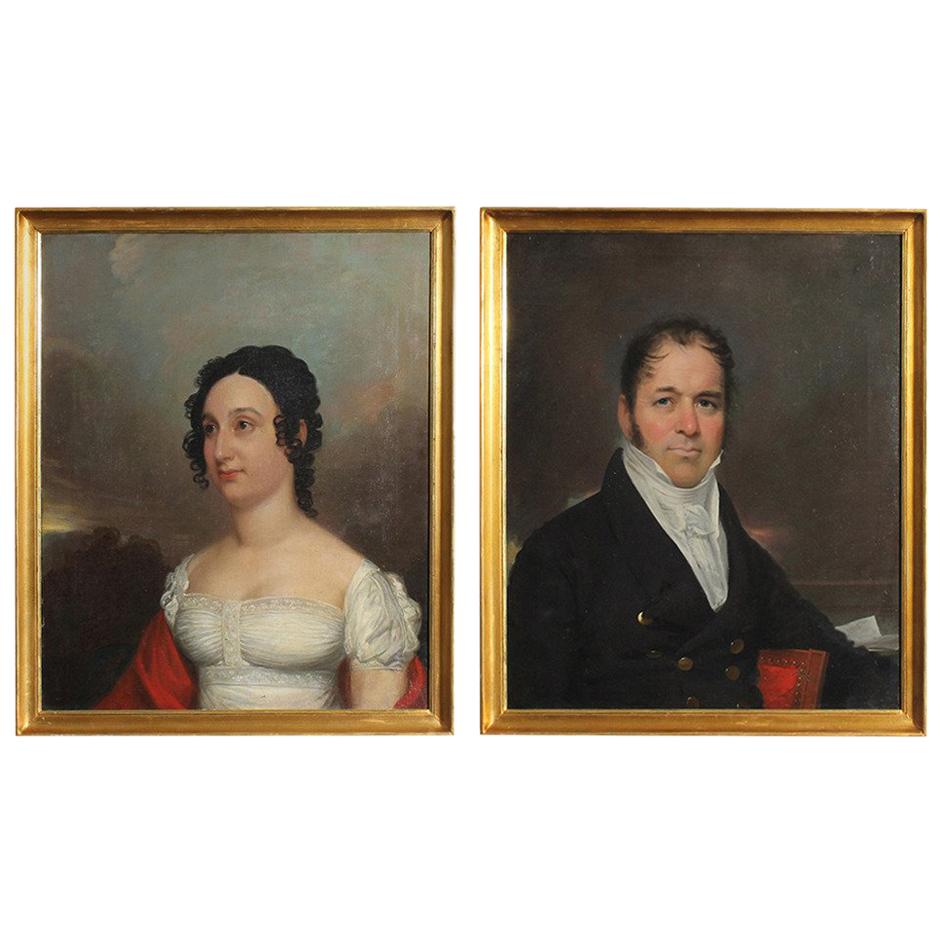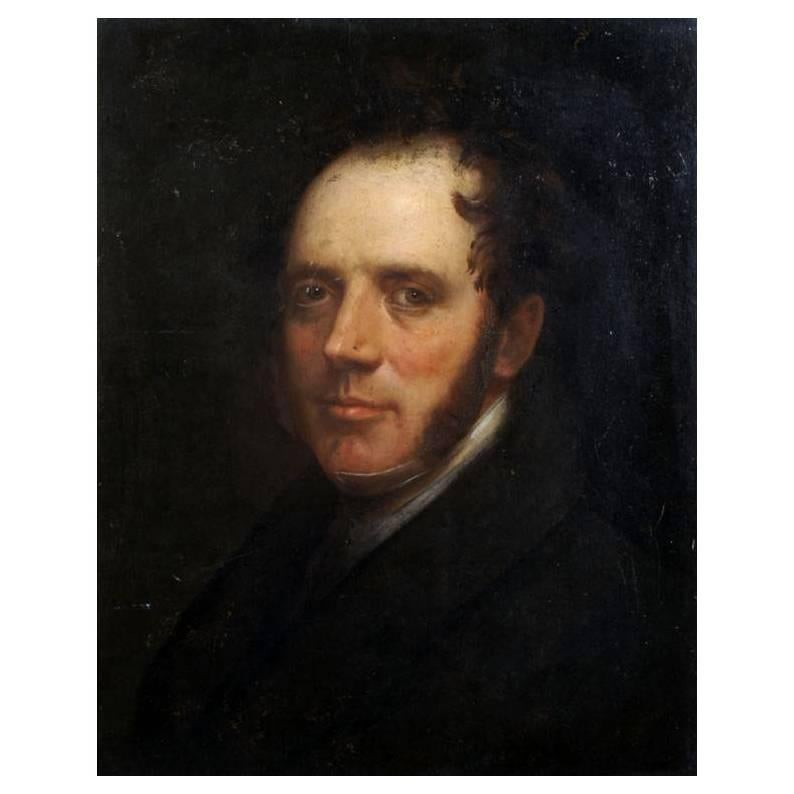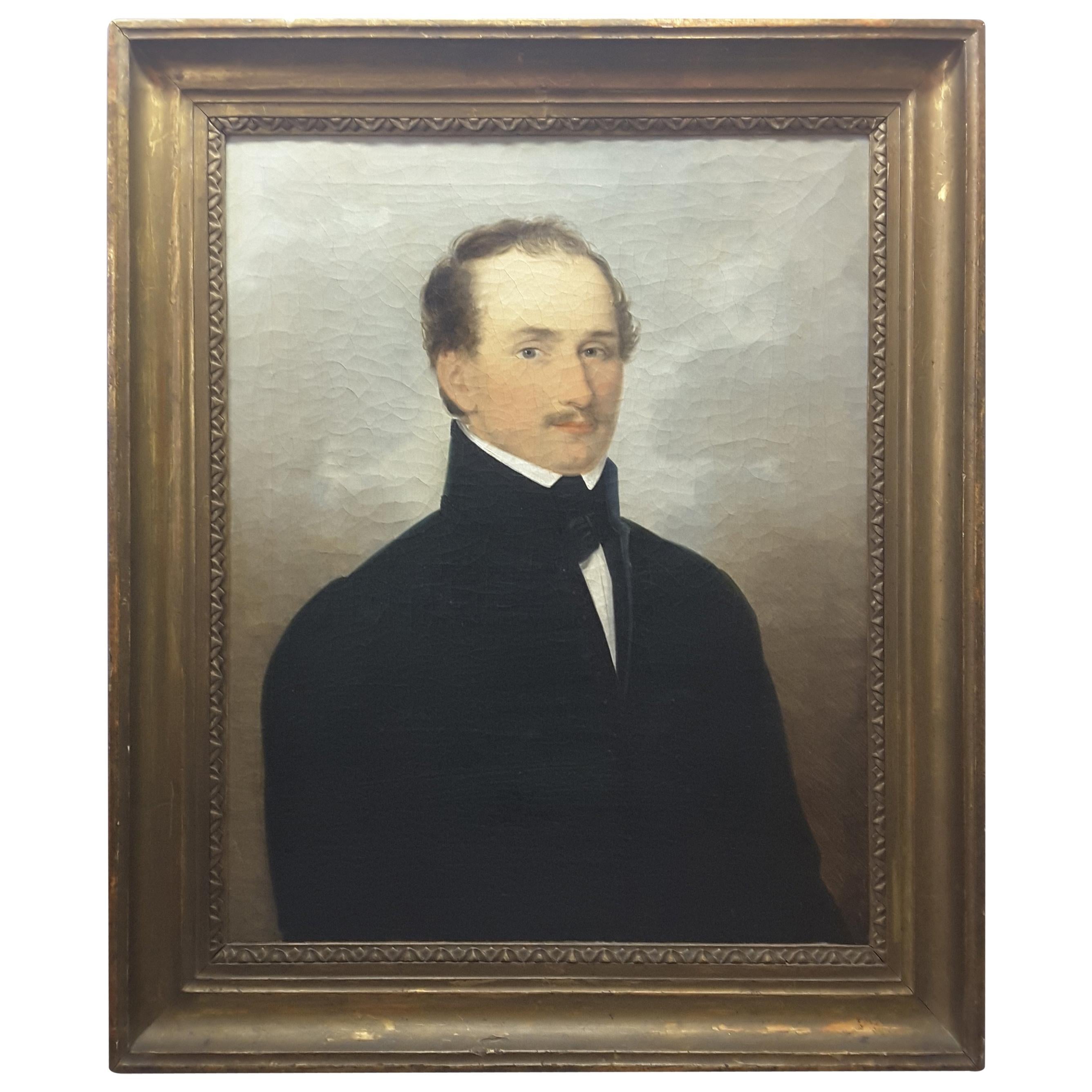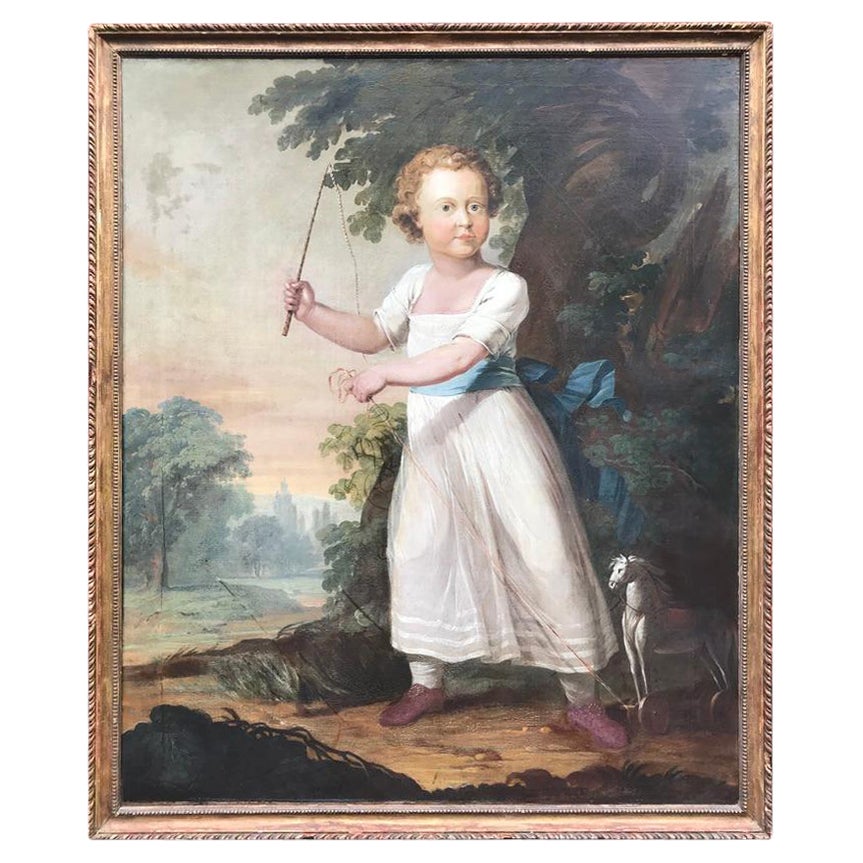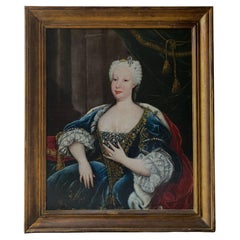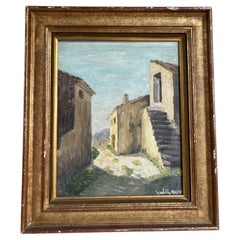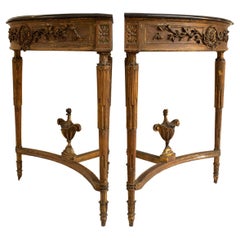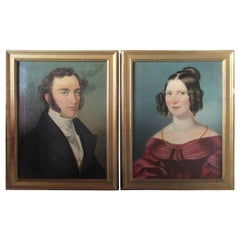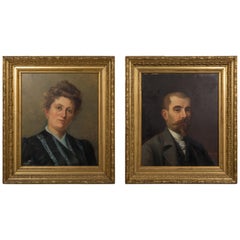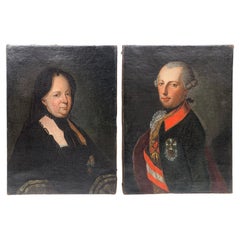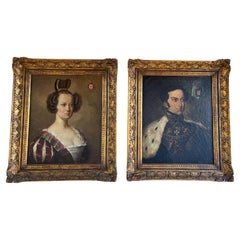
Pair of Portraits of Dom Miguel and Dona Maria ii, 19th Century Portugal
View Similar Items
Want more images or videos?
Request additional images or videos from the seller
1 of 7
Pair of Portraits of Dom Miguel and Dona Maria ii, 19th Century Portugal
About the Item
- Dimensions:Height: 28.75 in (73 cm)Width: 24.41 in (62 cm)Depth: 2.37 in (6 cm)
- Materials and Techniques:
- Place of Origin:
- Period:
- Date of Manufacture:1850-1880
- Condition:Minor losses.
- Seller Location:Lisboa, PT
- Reference Number:1stDibs: LU7365230649512
About the Seller
5.0
Vetted Seller
These experienced sellers undergo a comprehensive evaluation by our team of in-house experts.
Established in 2018
1stDibs seller since 2022
10 sales on 1stDibs
Typical response time: 13 hours
More From This SellerView All
- Portrait of D. Maria Bárbara De Bragança, Circle of Louis-Michel Van LooBy H. van LoonLocated in Lisboa, PTPORTRAIT OF D. MARIA BÁRBARA DE BRAGANÇA (1711-1758), QUEEN OF SPAIN Circle of Louis-Michel van Loo (1707-1771) Oil on canvas Her Royal Highness, the Infanta Maria Barbara of Braganza (1711-1758) was the first-born child of King John V of Portugal (1689-1750) and his queen consort Maria Anna of Austria (1683-1754). Born in December 1711, she had the Convent Palace of Mafra built in her honour following a vow made by her royal father. Her status as Princess of Brazil, inherent to 18th century Portuguese presumptive heirs, would however be superseded once the queen gave birth to two male princes, D. Pedro (1712-1714) and D. José (1714-1777), preventing her from ascending to the throne. Daughter of one of the most illustrious monarchs of his time, Maria Barbara was carefully educated to become a fond admirer of the arts, and of music in particular, having had the Italian composer Domenico Scarlatti (1685-1757) as her music teacher. On the 10th January 1723 the young princess was betrothed to the Infante Ferdinand of Spain (1713-1759), eldest son of King Philip V (1683-1746). Six years later, on the 19th January, she entered her new country in a carefully choreographed ceremony that became known to history as the “Exchange of the Princesses”. This unique event took place on a specially built Bridge-Palace, a wooden, luxuriously decorated structure that included various modules and rooms, on both banks of the river Caia, the natural border between the town of Elvas in Portugal and of Badajoz in Spain. Simultaneously, on the same day that the Portuguese Infanta crossed the border to marry the Spanish Crown Prince, her new sister in law, the Infanta Mariana Victoria of Bourbon (1718-1781), her husband’s sister, crossed the same bridge in the opposite direction to marry Prince D. José, the Portuguese heir to the throne. Once married, Maria Barbara would spend 17 years as Princess of Asturias, only becoming Queen of Spain at her husband’s accession following the death of Philip V in 1746. She is portrayed in the 1743 painting by Louis-Michel van Loo (1707-1771) now in the Prado Museum, in which Philip V had himself represented with all his close family. The new Queen would take an important role at court eventually becoming the liaison between her husband and the King of Portugal, particularly throughout the negotiations for the Treaty of Madrid (1746-1750). Maintaining her interest in music, she patronized the Italian castrato singer Farinelli (1705-1782) while remaining close to her old master Scarlatti, having herself composed some sonatas for a large orchestra. She would also commission and fund the building of the Royal Salesians Monastery complex in central Madrid, where both her and Ferdinand VI are buried. The portrait we are presenting for sale shows the Queen in half-length, turning left at three quarters. She is wearing a blue low-cut dress embroidered with flowers and foliage, over a lace cuffed white blouse, and an ermine cloak pined on the left-hand side by a diamond broach. The powdered hair style is held sideways by a seven diamond and black plume headdress and topped by a small gold and pearl crown. The right arm rests on a cushion while the left hand, at chest height, holds a miniature male portrait. The Infanta’s features are analogous to the 1725 portrait by the painter Domenico Duprà (1689-1770), also in the Prado Museum collection. Further similarities can be found in another portrait by Louis-Michel van Loo, in which a seven diamond and black plume headdress is also present. In this work, the cushion supporting Maria Barbara’s right arm has also some obvious similarities to our painting. The same diamond headdress reappears in Van Loo’s above-mentioned portrait of Philip V’s family dated from 1743. It is nevertheless in Lisbon’s Ajuda National Palace that it is possible to find an almost identical depiction of the Infanta holding a miniature portrait of her husband. In it, the future Ferdinand VI is portrayed facing right at three quarters and wearing a curly wig, suit of armour, the golden fleece insignia and a blue band, in a composition that closely resembles an 18th century Spanish school painting that appeared in the art market in January 2016. Another detail common to various portraits of the Portuguese Infanta and Queen of Spain is the small gold and pearl crown on her head. In another Van Loo painting, also from the Prado Museum, in which Maria Barbara is portrayed as Queen, this crown is represented together with a headdress similar to the one previously described. Another two paintings by the same artist, at the Royal Academy of Saint Ferdinand, include the same ornament. We must also refer the paintings by the artist Jean Ranc (1674-1735). In one, dating from 1729 (Prado Museum), the Infanta is depicted outdoors holding a flower bouquet and wearing a yellow silk dress with red cloak, and a set of diamond and ruby jewellery that includes a headdress similar to the one present in our portrait. Another work by the same artist, belonging to the Complutence University of Madrid, depicts the Infanta sumptuously dressed in identical colours to our painting and wearing an elaborate headdress and diadem. These portraits, beyond their iconographical importance as contemporary records of the Infanta and Queen Maria Barbara, are also illustrative of 18th century fashion for jewelled head dressing. Often, flowers were combined with joyful adornments, composing almost theatrical displays that would reinforce the ostentatious nature of the image. The ornamental flowers and the chromatic character of the jewels would complement the luxury of the colourful dresses in blue, crimson, green or other silk shades, in compositions whose sole purpose was to highlight a royal sitter’s wealth and power, becoming an essential statement accessory within the strict court protocols and codes of conduct. Circle of Louis-Michel van Loo (1707-1771) Slowly but steadily, the resolute, tranquil and dignified attitude of Renaissance and Baroque portraiture becomes artificial and presumptuous. Mid 18th century society favours elusive expression and psychological deepness, albeit limited to the face, that, with emphasis on detail, on the rich colour palette and on changing costumes and landscapes, associated to the courtliness of gestures, creates a strongly artificial environment while maintaining a highly poetic intrinsic character. Louis-Michel van Loo followed a dynasty of famous Dutch origin artists that had settled in France. Initially taught by his father, Jean-Baptiste von Loo (1684-1745), the younger van Loo studied in Turin and Rome and frequented the Paris Academy. In Rome he worked with his uncle Charles-André van Loo (1705-1765) and become a painter for the Turin Court. In 1737 he arrived in Spain being summoned by Philip V to succeed Jean Ranc as painter of the king’s chamber. In Madrid, his work covers the numerous Court commissions and the Royal Saint Ferdinand Fine Arts Academy, of which he was a founding member and director for the Painting department in 1752. Is production at court consisted essentially of numerous portrait paintings, often Royal gifts...Category
Antique 18th Century Spanish Baroque Paintings
MaterialsCanvas
- Countryside village oil on canvas France 19th centuryLocated in Lisboa, PTCountryside village oil on canvas France 19th century with minor losses.Category
Antique 19th Century French Rustic Paintings
MaterialsCanvas
- Pair of Louis XVI Style Corner Tables, Portugal 19th CenturyLocated in Lisboa, PTPair of Louis XVI style corner tables. Carved wood, with traces of ancient gold and black marble tops. Portugal 19th century.Category
Antique 19th Century Portuguese Console Tables
MaterialsMarble
- Oil on Canvas Representing Flowers. 19th Century French SchoolLocated in Lisboa, PTOil on canvas representing flowers. 19th century French School.Category
Antique 19th Century French Paintings
MaterialsCanvas
- Neo-Classical Portuguese Mirror, 19th CenturyLocated in Lisboa, PTA Neo-Classical Portuguese mirror from the 19th century. Crafted in the Neo-Classical style, which was popular during the 19th century in Portugal. The Neo-Classical style drew insp...Category
Antique 19th Century Portuguese Neoclassical Wall Mirrors
MaterialsOak
- Filipino style table, Portuguese 19th CenturyLocated in Lisboa, PTFilipino style table, Portuguese 19th CenturyCategory
Antique 19th Century Portuguese Console Tables
MaterialsOak
$2,269 Sale Price20% Off
You May Also Like
- 19th Century Pair of Portraits SignedLocated in Water Mill, NYPair of portraits, husband and wife 19th century oil on canvas inscribed and dated 1838 wax relined in giltwood frames.Category
Antique 1830s Paintings
MaterialsPaint
$2,800 / set - Pair of 19th Century French PortraitsBy E. BourgeoisLocated in Winter Park, FLA pair of 19th century French portraits depicting a bourgeois husband and wife. Signed E. Bourgeois. From the town of Autun in Burgundy. ...Category
Antique Late 19th Century French French Provincial Paintings
MaterialsPaint
- Pair 18th Century Royal Portraits, Empress Maria Theresa and Emperor Joseph IIBy Joseph HickelLocated in New York, NYInterests: Royalty, Enlightened Absolutism, 18th century European painting, Joseph Hickel, Marie Antoinette A fine pair of 18th century portraits depicting Maria Theresa, Holy Roman Empress consort, Queen consort of Germany, Hungary, Croatia and Bohemia and Archduchess of Austria and her son Joseph II, Holy Roman Emperor, King of the Romans, Germany and Archduke of Austria. Empress Maria...Category
Antique 18th Century Austrian Paintings
MaterialsCanvas
- Pair of Vintage Framed Portraits, c. 19th CenturyLocated in Napa, CAPair of vintage oil paintings, circa 19th century in gilded frames.Category
Antique 19th Century Paintings
MaterialsCanvas, Wood, Giltwood
$14,000 / set - Pair of Portraits on Ivory 19th CenturyBy Europa AntiquesLocated in Madrid, ESPair of portraits on ivory. Old renascentist portraits on ivory plate with golden wooden frame. Each measures: 21x21 and 11x11 cm. Good condition.Category
Antique 19th Century French Renaissance Paintings
MaterialsPaint
$960 Sale Price / set20% Off - 19th Century Pair of English Husband and Wife Miniature PortraitsLocated in Marbella, ESPair of 19th century English miniature portrait paintings. On the back can be read: Joseph Storr of Ouswick, born 6 of February 1755 and died 10 of December 1831. Married with Ann...Category
Antique 19th Century English Paintings
MaterialsWood
